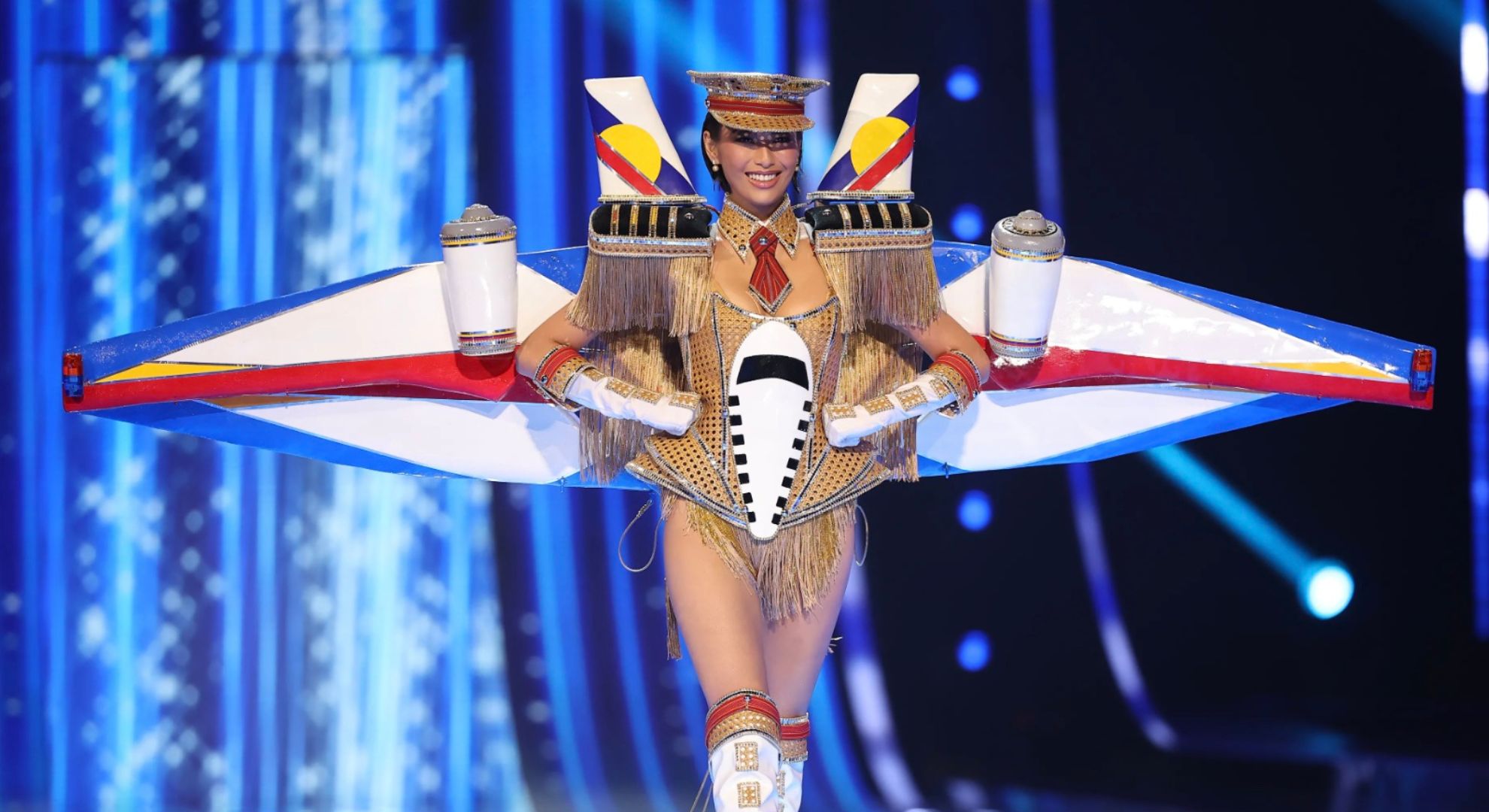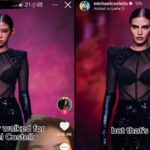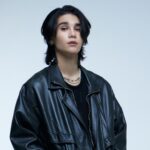Without a doubt, beauty pageants are already considered a part of our culture. Filipinos are known for their fixation with them. The public is tuned in to every update and step of their representative: her pre-pageant performance, catwalk, gown, swimsuit, advocacy, and her intelligence, eloquence, and articulacy in responding to questions, especially in the Q&A portion.
With this, the day Miss Universe is held is treated like a national holiday. Everything stops as everyone watches how the competition unfolds. Everybody is greatly anticipating the next woman who will bring the crown back to the nation.
Ahead of this year’s primary event, the pageant’s national costume segment was held last Friday, November 17. After days of teasing and speculation about the country’s latest entry for the annual contest, the said costume is finally revealed when the Philippines’ bet Michelle Dee proudly struts to the stage.
View this post on Instagram
For this edition of the national costume portion, Dee donned an aviation-inspired costume featuring a mural of Philippine tourist spots and the controversial Department of Tourism (DOT)’s ‘Love The Philippines’ slogan plastered on the back of Dee’s airplane-like wings. On top of that, she complimented it with a hat and a bodysuit woven into the solihiya pattern.
Created by artist Michael Barassi with the aim of “promoting tourism in the country,” according to Dee, this theme also is a homage to her being a Philippine Air Force reservist.
Filipino beauty queens from the past editions have already sported costumes ranging from the traditional baro’t saya, folklore, to the Philippine Eagle, flag, and the iconic comic book character like Darna. Dee took a different route for the costume as it earned divided reactions online. Some people were astonished and praised the former actress as it provided a “unique” take while several criticized this creative decision on social media.
“If she had been a Navy reservist, she might have ended up looking like a submarine. If she had been an Army reservist, she might have carried a bazooka. Or if she had been an employee at the DPWH, she might have ended up dressed like a bulldozer,” one user shares his perspective on Facebook.
https://www.facebook.com/photo.php?fbid=857584296112678&set=a.142348960969552&type=3&mibextid=cR73hX
“The whole idea behind a national costume is to showcase that functional attire that IDENTIFIES your unique culture. It’s NOT a work of art or a conjuring of any subconscious juvenile predilection. It’s a statement of cultural and historical fact–and any self-respecting modern “woke” person ought to know that,” he continued.
Although it has no bearing on the main competition, it is one of the extremely popular features of the show as audiences look forward to seeing the creativity, innovation, and resourcefulness of each contestant in showing and celebrating their respective country’s culture and heritage. It also provides a large platform for different nations to promote cultural understanding by hearing the backstories and references of the worn designs as well as to showcase the designer’s artistry.
Definitely, from an ordinary Filipino’s perspective, it represents the country in the most ironic way since the country has a prevalent transportation crisis that is continuously worsening with the country’s airport plagued with overbooking issues, constant delays, as well as cancelations and rescheduled flights which placed them in one of the worst airports in the world. Recently, it was reported that the Ninoy Aquino International Airport (NAIA) ranked eighth as the worst airport in Asia based on passenger queueing time.
Aside from that, the Philippine Air Force is one of the perpetrators of the constant attacks and destruction of indigenous communities in the provinces. In fact, in 2021, it said the Duterte administration facilitated aerial bombings in several communities such as Sitio Burak in Miagao, Iloilo.
The criticism has also intensified in light of the fact that Dee and her team took inspiration from Apo Whang-Od, a prominent indigenous figure from Kalinga, as well as the art and history of ‘mambabatok’ for the sleek, edgy, and intricate black gown she wore that gained acclaim from viewers during the long gown portion of the show.
View this post on Instagram
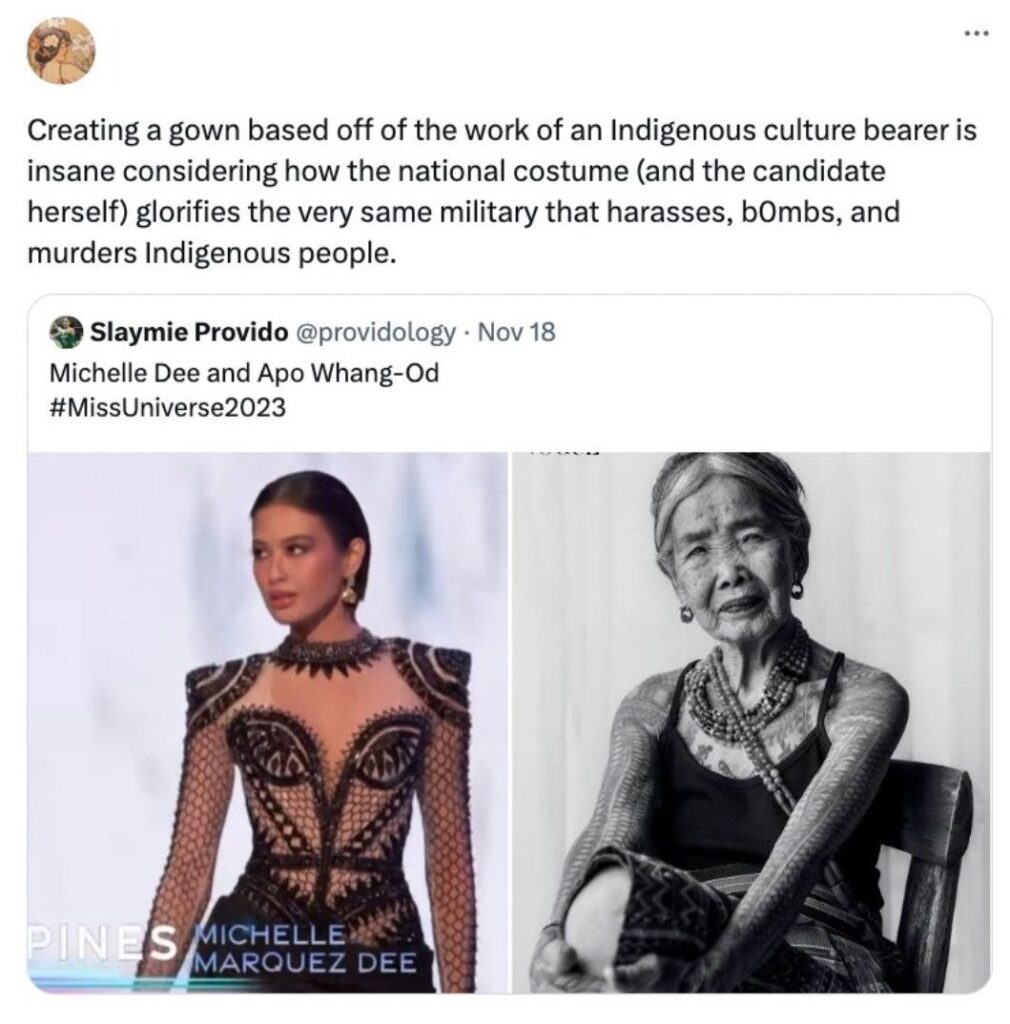
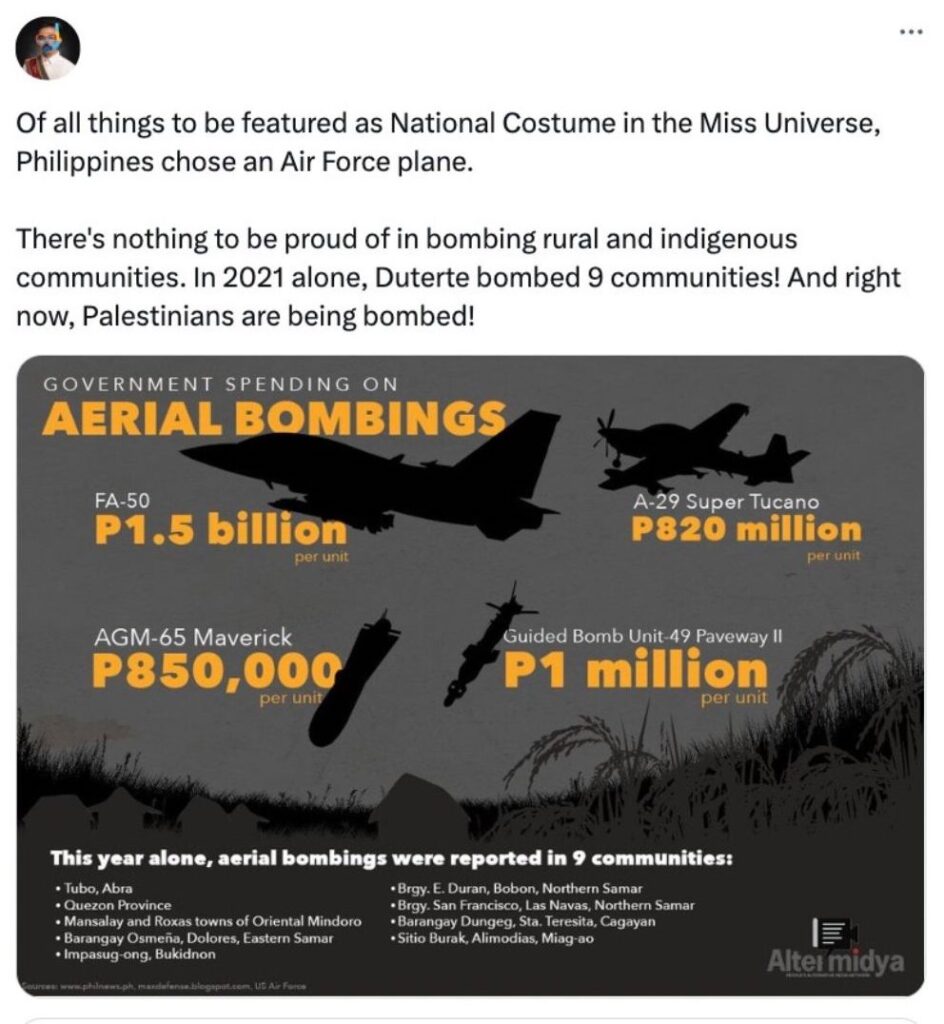
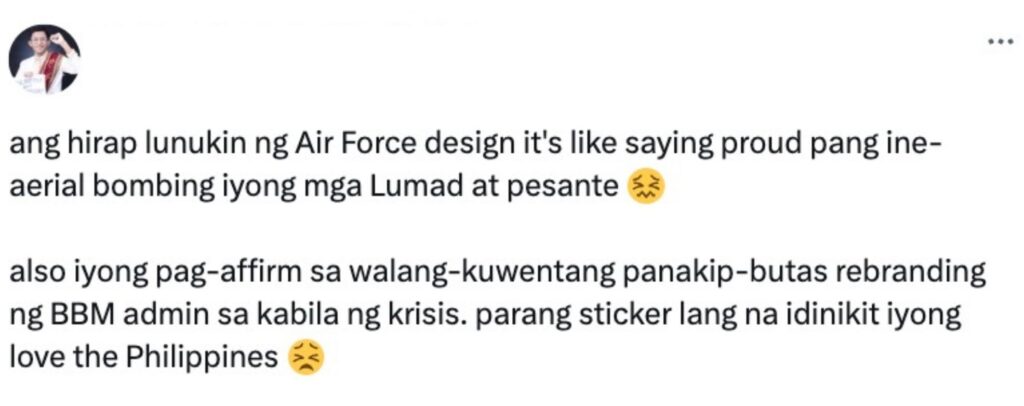
We cannot help but ask: does this truly reflect Filipino culture and heritage?
Despite the costume being well-made and taking plenty of time, energy, and effort to conceptualize and materialize, future candidates should consider what and how should they present our culture on the international stage. Clearly, the Philippines is a cesspool of various rich and remarkable cultures and traditions from every region and locality. And a lot of them deserve to be highlighted. The costume should not just mirror the contestant or the designer, but the entire country as well. In effect of utilizing a more personal path of defining a national costume, it is understandable that there are individuals who would not resonate with them.
Now that the annual beauty pageant is currently taking large developments for more inclusivity and representation to fit into modern times, it is evident that Miss Universe will always be political. The discussion is hard to swallow but valid and should be frequently talked about as a country that prides itself as a pageant-crazed one.
Other POP! stories that you might like:
Who is Sophia Laforteza, HYBE’s first Filipina talent debuting in the newest group ‘KATSEYE’
Notes on ‘privilege’: Not everyone has the capacity to pursue their desired careers
Manila Pop Culture Con featuring ‘One Piece’ star Mackenyu stirs drama for ‘poor event management’
Commentary: Publicly humiliating your partners is a no-no, even if it’s meant as a joke
‘Wine flood’: A town in Portugal gets flooded with red wine after distillery’s tank explodes

